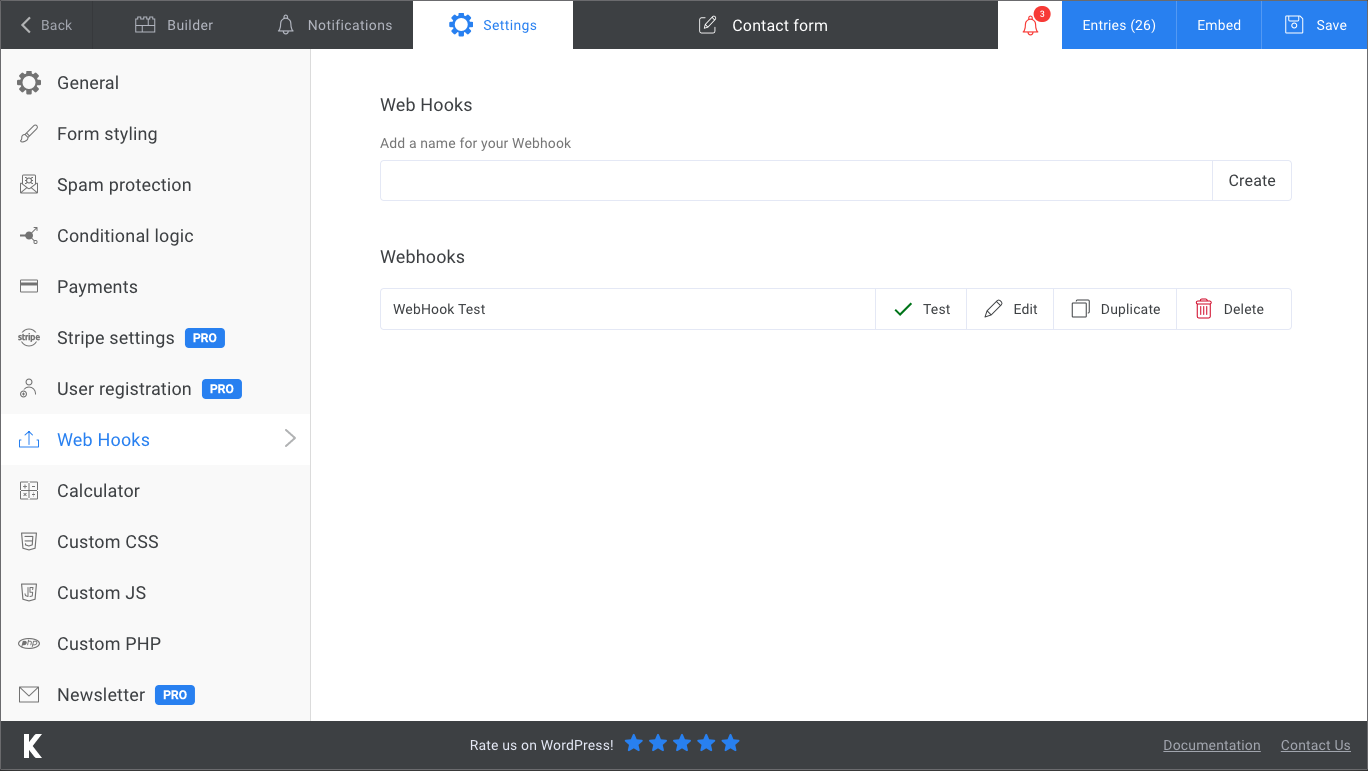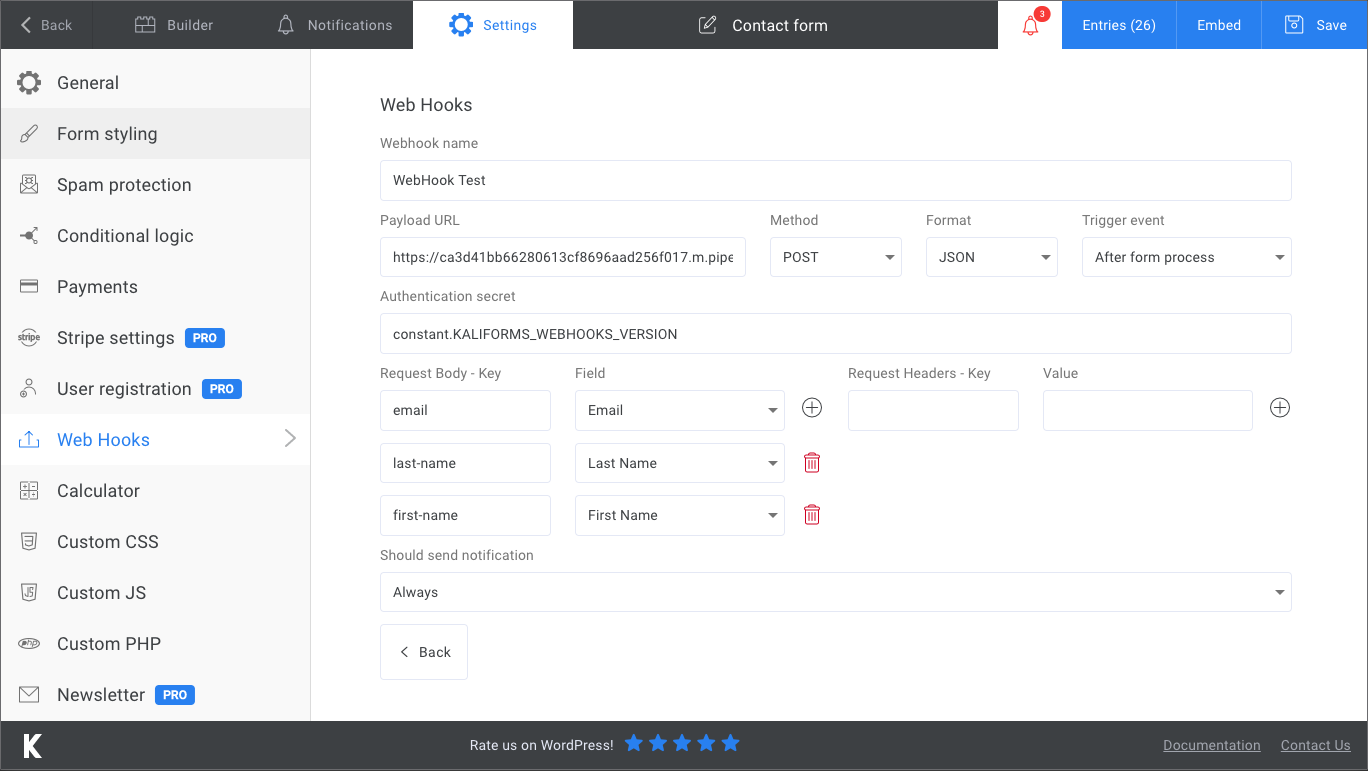Webhooks allow you to build or set up integrations, when one of the events is triggered, we’ll send a HTTP Request to the configured URL.
General view
This will display a list of all your configured webhooks. Here you can also use the Test button to test your configuration. Please keep in mind that the test only checks the connection to the URL – not your actual integration.

Webhook configuration options
- Name: the name of the webhook, is only used internally so you can differentiate between them.
- Payload URL: the url used by the webhook when sending the HTTP Request.
- Method: Select one of the standard HTTP Request methods (GET, POST, PUT, PATCH, DELETE) that suits your needs.
- Format: Depending on how you want to handle data on server side, select the format that you need json or form. Keep in mind that the format does not affect the GET request, as that request does not send a payload ( Data is sent through the URL )
- Authentication secret: Just in case you have a custom integration and you need to secure it, we provided this field that creates a custom header ( XKali-Auth ) that is populated with the value added in this field. In this field you can use constants defined in your WordPress config file ( or any other PHP file as long as they are loaded in your installation ) by adding the constants. prefix. For example: constant.DEFINED_CONSTANT_GOES_HERE.
- Request body: Build your request body here. Create your own custom keys and map them with the values coming from the form.
- Request headers: Creating custom headers is easy, just create the key and add a value to it. All custom headers will have the X- prefix added. For example, adding a custom header Foo with the value Bar, will evaluate as X-Foo: Bar. An exception to this is the Authorization header, which is rendered as is. These fields accept constants as well ( constant.DEFINED_CONSTANTA_GOES_HERE )

Conditionals
You can also condition this functionality based on the user selection, this will allow you to control if the HTTP Request will be made or if only a regular form submission will be made.
